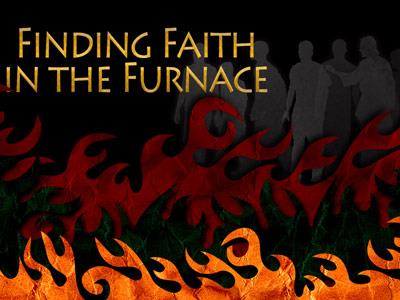-
Bound To God Series
Contributed by Roshelle Brenneise on Nov 20, 2025 (message contributor)
Summary: As we know, the era of the Judges was a difficult time in Israel due to the never-ending spin cycle of disobedience – defeat – crying – deliverance. The book of Ruth is a glimmer of hope in such a dreary landscape.
November 22, 2025
A short history of Moab:
• Moab was the son of Lot and his oldest daughter (see Genesis 19:36-38).
• The Moabites were not among the nations God told Israel to destroy (see Deuteronomy 2:9).
• The king of Moab tried to have Israel cursed (see Numbers 22-24).
• The Moabites seduced Israel into idolatry at the suggestion of Balaam (see Numbers 25:1-3).
• God used Moab as an instrument of discipline against Israel (see the story of Ehud in Judges 3:12-31).
The relationship between Israel and Moab was not a good one – and that animosity would continue for hundreds of years (see Isaiah 16:6-7).
----------
Deuteronomy 23:3 tells us that, “No Ammonite or Moabite or any of his descendants may enter the assembly of Yahweh, even down to the 10th generation.”
According to genealogists, a modern generation is between 25-30 years, while also stating that ancient generations could be closer to 20-25 years, so the above prohibition lasted a maximum of 250-300 years.
In the story of Jephthah, while attempting to negotiate peace with the King of Ammon, he made the following statement: “For 300 years Israel occupied Heshbon, Aroer, the surrounding settlements and all the towns along the Arnon. Why didn't you retake them during that time?” (see Deuteronomy 2:26-37 and Judges 11:26)
So, by the time we get to Jephthah, 300 years had elapsed….
----------
In Christian Bibles, the story of Ruth appears between the books of Judges and 1st Samuel, interrupting the flow of the story. But, according to the 1st verse, “And it happened in the days when the judges ruled, there was a famine in the land…” Ruth’s story takes place during the time of judges, likely sometime between Gideon and Samson. My Chronological Bible places Ruth’s story between Jephthah and Samson.
As we know, the era of the Judges was a difficult time in Israel due to the never-ending spin cycle of disobedience – defeat – crying – deliverance. And as the story of Ruth unfolds, we read that famine drove Elimelech, his wife Naomi and their two frail sons, Mahlon and Chilion out of Judah and into Moab – where they remained for 10 years.
Shortly after arriving, Elimelech died. Mahlon married Ruth and Chilion married Orpah. Sadly, both men died without producing children.
As widows, these ladies had no social standing and little to no economic means to survive, so Naomi decided it was time to go back home to Judah. Why? Because God had made provisions for the care and treatment of widows within Israel’s societal structure (see Leviticus 19:9-10; Deuteronomy 14:28-29; 24:19-21).
Aware that she had no ability to care for herself, let alone for her widowed daughters-in-law - and perhaps out of embarrassment - Naomi attempted to persuade Ruth and Orpah to remain with their own families.
Initially, both girls insisted on going with her. Eventually, Orpah returned to her family, but Ruth chose to stay, sealing her decision with an oath:
Ruth 1:16-17 ….. Don't urge me to leave you or to turn back from you. Where you go I will go, and where you stay I will stay. Your people will be my people and your God my God. Where you die I will die, and there I will be buried. May Yahweh deal with me, be it ever so severely, if anything but death separates you and me.
Ruth was leaving everything she knew – family, culture, religion – and going to a place where she would be viewed with suspicion and hostility. Yet, she chose to embrace Naomi’s people and she chose to follow Naomi’s God. She chose to live the rest of her life in a foreign country and she even called down a curse on herself if she failed to keep her promise. This decision is unparalleled in Scripture.
It was the beginning of barley harvest (late April/early May) when Naomi and Ruth arrived in Bethlehem. Naomi was welcomed home, but she insisted that her name was no longer Naomi “Pleasantness” but Mara “Bitterness” because she believed that Yahweh had dealt harshly with her.
Ruth took it upon herself to become the chief bread winner and so into the fields she went. More specifically, she “happened” to begin her gleaning career in the fields belonging to Boaz, “a relative of Elimelech her father-in-law.”
While she was gleaning, Boaz arrived and greeted all the harvesters, then turned to his foreman, "Who is that girl?"
"She is the young woman from Moab who came back with Naomi. She asked if she could gather grain behind the harvesters. She has been hard at work ever since, resting only for a few minutes in the shelter."
Boaz went over and said to Ruth, "Listen, my daughter. Stay here with us and don't go to any other fields. See which part of the field the women are harvesting and follow them. I have warned the young men not to bother you. When you need something to drink, help yourself to the water they have drawn from the well."

 Sermon Central
Sermon Central



